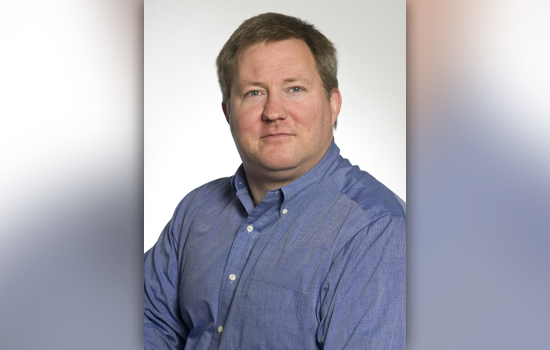Professor predicts a universe full of black holes
Richard O’Shaughnessy co-author of paper in ‘Nature’
Richard O’Shaughnessy
A new study published in Nature presents one of the most complete models of matter in the universe and predicts hundreds of massive black hole mergers each year observable with the second generation of gravitational wave detectors.
The model anticipated the massive black holes observed by the Laser Interferometer Gravitational-wave Observatory. The two colliding masses created the first directly detected gravitational waves and confirmed Einstein’s general theory of relativity.
“The universe isn’t the same everywhere,” said Richard O’Shaughnessy, assistant professor in RIT’s School of Mathematical Sciences, and co-author of the study led by Krzysztof Belczynski from Warsaw University. “Some places produce many more binary black holes than others. Our study takes these differences into careful account.”
Massive stars that collapse upon themselves and end their lives as black holes, like the pair LIGO detected, are extremely rare, O’Shaughnessy said. They are less evolved, “more primitive stars,” that occur in special configurations in the universe. These stars from the early universe are made of more pristine hydrogen, a gas which makes them “Titans among stars,” at 40 to 100 solar masses. In contrast, younger generations of stars consumed the corpses of their predecessors containing heavy elements, which stunted their growth.
“Because LIGO is so much more sensitive to these heavy black holes, these regions of pristine gas that make heavy black holes are extremely important,” O’Shaughnessy said. “These rare regions act like factories for building identifiable pairs of black holes.”
O’Shaughnessy and his colleagues predict that massive black holes like these spin in a stable way, with orbits that remain in the same plane. The model shows that the alignment of these massive black holes are impervious to the tiny kick that follows the stars’ core collapse. The same kick can change the alignment of smaller black holes and rock their orbital plane.
The calculations reported in Nature are the most detailed calculations of its kind ever performed, O’Shaughnessy said. He likens the model to a laboratory for assessing future prospects for gravitational wave astronomy. Other gravitational wave astronomers are now using the model in their own investigations as well.
“We’ve already seen that we can learn a lot about Einstein’s theory and massive stars, just from this one event,” said O’Shaughnessy, also a member of the LIGO Scientific Collaboration that helped make and interpret the first discovery of gravitational waves. “LIGO is not going to see 1,000 black holes like these each year, but many of them will be even better and more exciting because we will have a better instrument—better glasses to view them with and better techniques.”
O’Shaughnessy is a member of RIT’s Center for Computational Relativity and Gravitation where he collaborates with Carlos Lousto, professor in RIT’s School of Mathematical Sciences and a member of the LIGO Scientific Collaboration.
“The next round of observations of advanced LIGO may soon prove this prediction right. In any case it will provide very important insight into stellar black hole formation mechanisms,” Lousto said.
The paper, “The first gravitational-wave source from the isolated evolution of two 40—100 M stars,” was co-authored by Belczynski and Tomasz Bulik from Warsaw University, Daniel E. Holz from the University of Chicago and O’Shaughnessy.














